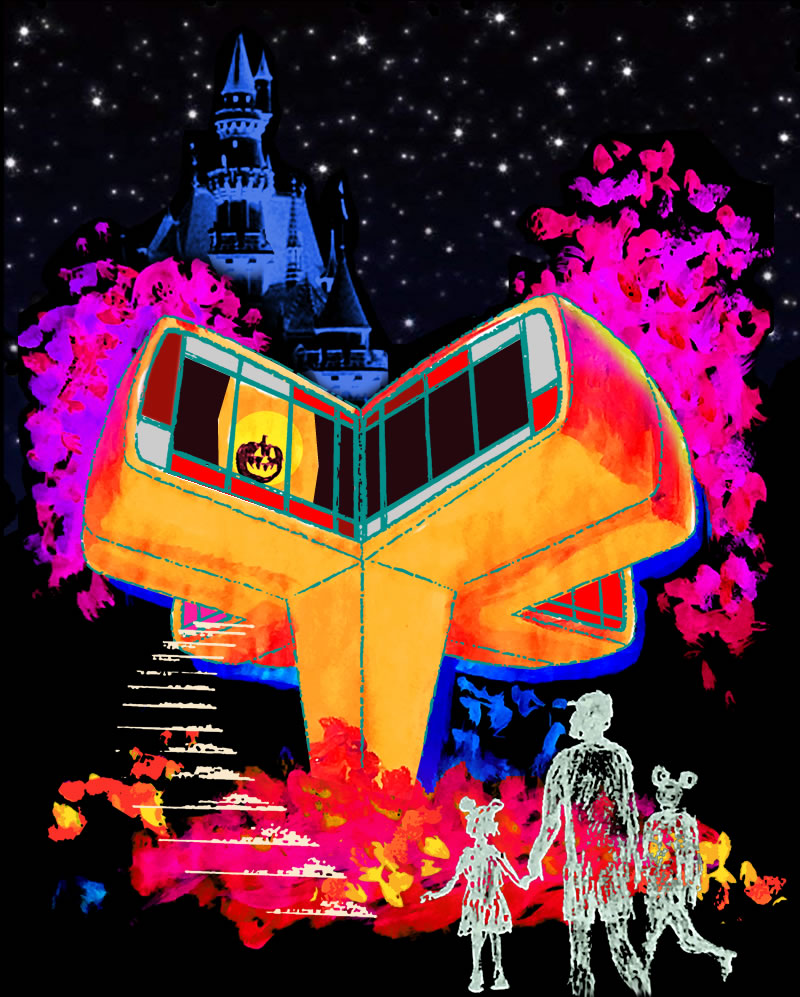

Tomorrow always holds the promise of something new and exciting, and this strangely graceful, bold and creative building bore that promise, even as its disturbing and sinister nature remained invisible to the 20 million visitors that passed through its phthalic anhydride and adipic acid portals during those years that its dark, incorporeal otherness lurked in The Happiest Place on Earth.
But, tomorrow is always built on today. And today, hidden and overlooked in Pixie Hollow, the haunted home's enormous reinforced concrete foundation sits like a forgotten tombstone, camouflaged in green and repurposed as a planter. On this spot, in 1967, a ghastly murder and attempted dismemberment brought an end to the eldritch consciousness that once permeated the Chemstrand fibers, the Bisphenol A resins, the Lauxite urea formaldehyde surfaces bonded with soy bean adhesives, the reinforced Resinox foam skin sandwiched with Phosgard flame retardants, and the sorcerous ultrasound dishwasher that rose up out of the melamine kitchen counter top like an unholy revenant.
Park staff, assigned as guides and garbed in cheerful plastic jumpers of colorful, functional, and beautiful versatility, immediately began reporting that the house possessed what they called "cold zones." Three of them. One zone for regular refrigeration, one for frozen, and one for irradiated food. Vinyl wire coatings seemed eerily sentient in the shadowless light from the polarized styrene ceiling diffuser panels. The climate control, operated by a panel in the kitchen, would randomly discharge the scent of salty sea air directly to individual rooms. A lavatory at one end, with Lustrex pushbutton height adjustments to facilitate use by children, challenged the imagination of those who lingered too long, lost in Stygian daymares. Late shift cleaning crews were frequently unnerved when the powered “Alpha” chair would adjust automatically to the desired position as synthetic melodies echoed via built-in speakers.
In 1967, when Monsanto’s Adventure Thru Inner Space attraction premiered, the House of the Future's future was abruptly revoked. On the appointed morning, however, the executioner's wrecking ball was supernaturally repelled by the cantilevered Merlon coated all-weather walls. Demolition crews then assaulted the fiendish polycarbonate entity with chainsaws, jackhammers, and blow torches, yet still this Rasputin-from-the-future refused to die. Choke chains were ultimately employed to slowly crush the victim to death, but its half-inch steel foundation bolts snapped before the stubborn cadaver surrendered and, with an unearthly groan (audible even in Frontierland), etherealized irrevocably in a particulate mist of Saflex vinyl butyral.
No one has ever seen the haunted house of the future again. Many, born well after the plastics revolution, doubt it ever really existed, despite fading Kodachrome slides, first-hand accounts of human-house encounters, and some badly preserved samples of ectoplasm-like petrochemical jellies. Yet those who scoff, insisting the spectral abode from beyond was a mere phantom of Main Street mass hallucination, need only pay a visit, as closing hour approaches and the fireworks fade above Sleeping Beauty's Castle, to wonder in the twilight at that forlorn and mystic concrete planter, hidden in the neatly tended heart of Pixie Hollow, and know the truth of the matter.